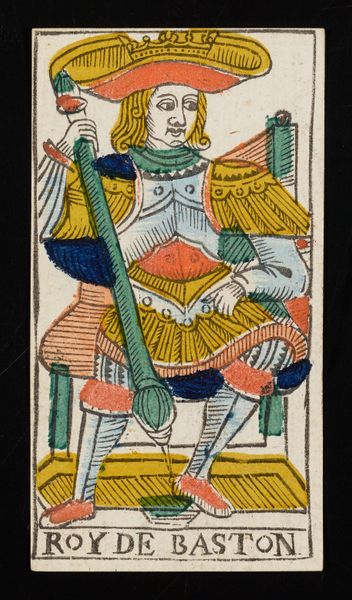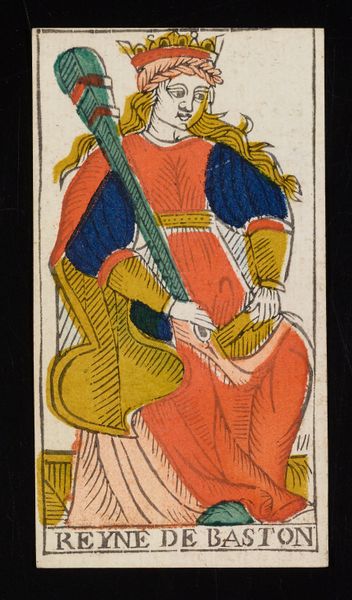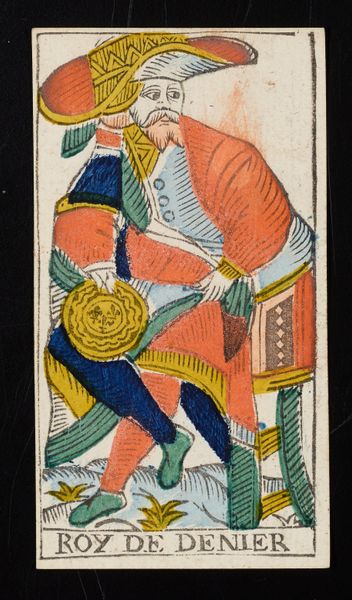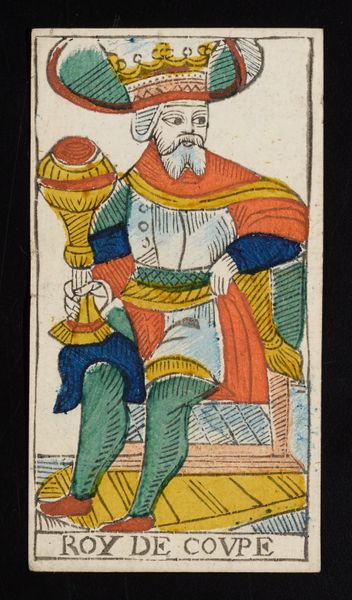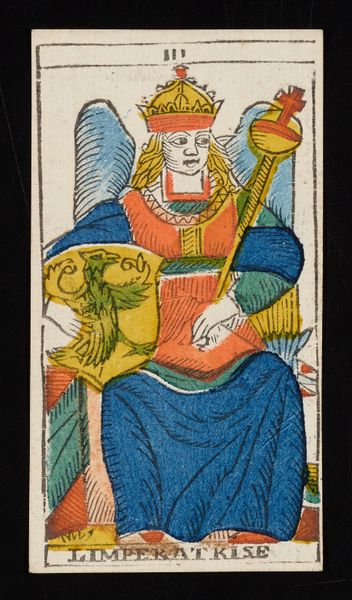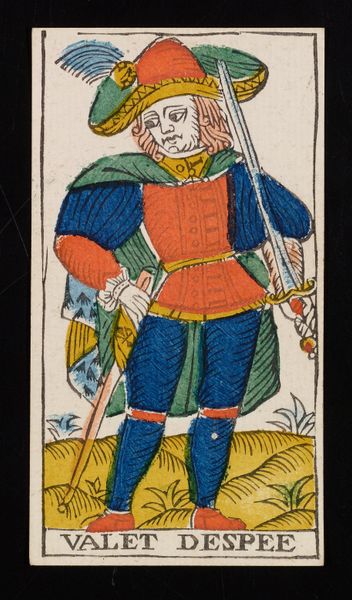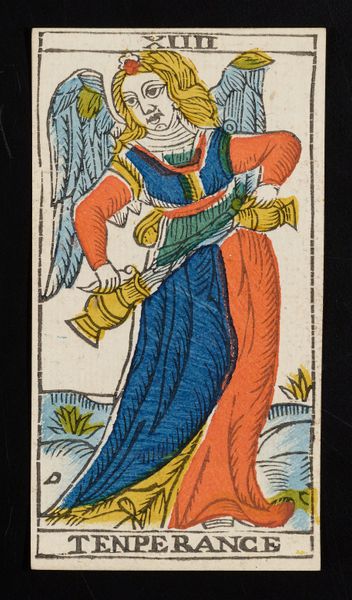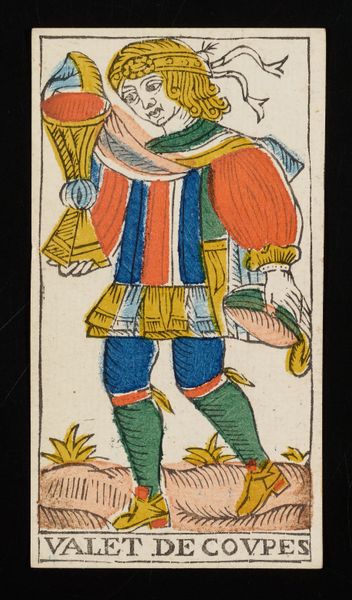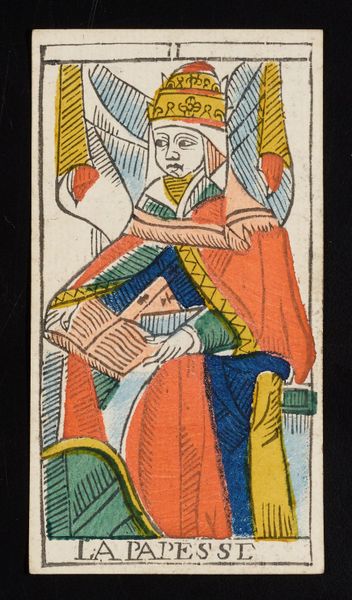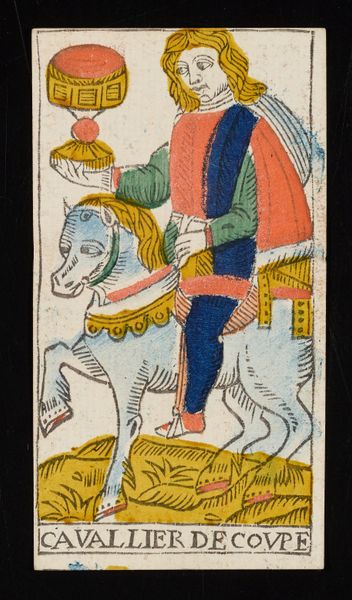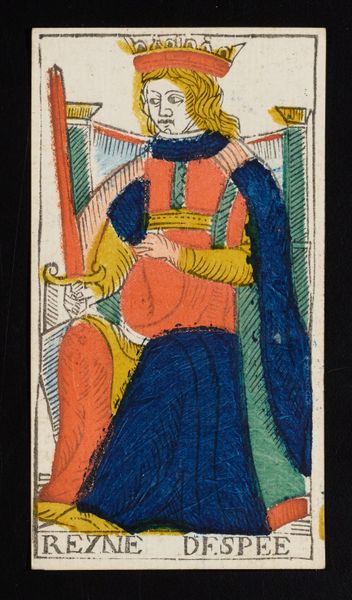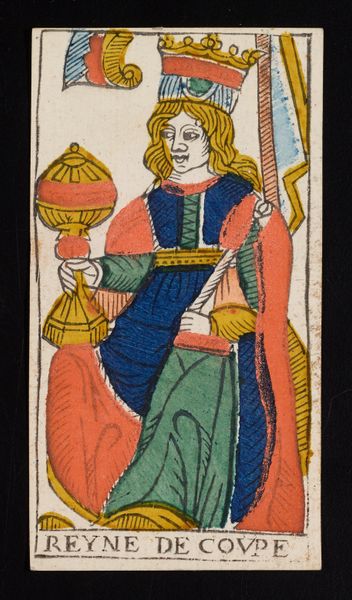
#
portrait
#
baroque
# print
#
figuration
Dimensions: 4 7/16 x 2 7/16 in. (11.27 x 6.19 cm) (image, sheet)4 5/8 x 2 1/2 in. (11.75 x 6.35 cm) (sheet, each)
Copyright: Public Domain
This is Claude Burdel's "The Emperor," a hand-colored woodcut from the 18th century, now residing at the Minneapolis Institute of Art. The composition centers on a figure rigidly posed, yet the flatness of the medium and the stark delineation of colors soften any sense of imposing power. The palette, restricted to blues, reds, greens, and yellows, is divided into distinct blocks by sharp black lines, further emphasizing the card's graphic quality over realistic representation. Consider how Burdel uses this formal reduction. The Emperor's authority isn't conveyed through naturalistic detail but through symbolic encoding – the scepter, the crown, the heraldic eagle. Semiotically, each element functions as a signifier of power. However, the stylized simplicity undercuts the very notion of absolute authority. What we are left with is a meditation on how power is constructed through signs, a visual language that can be both asserted and questioned. The meaning is not fixed, but remains open to interpretation.
Comments
No comments
Be the first to comment and join the conversation on the ultimate creative platform.
